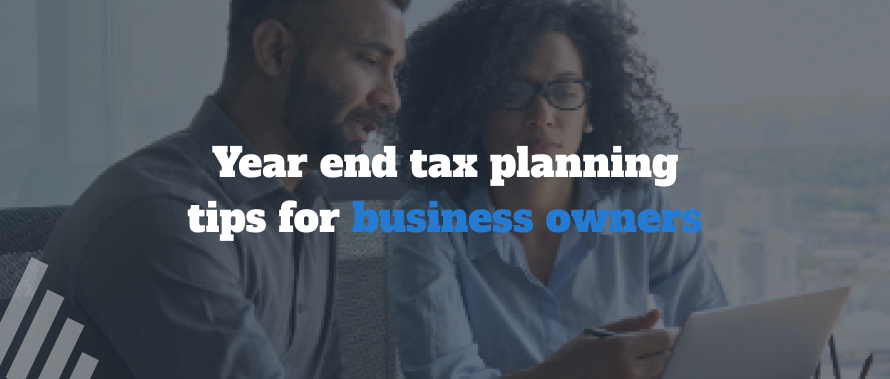As the tax year draws to a close, it is time to take account of the available allowances and undertake any last-minute tax planning. The last date of each tax year is 5 April, and you need to ensure you have utilised all your reliefs and allowances before the tax year end.
Year end tax planning can minimise your tax bill. Individuals should review all available allowances for the tax year and consideration should be given to the extent to which you have used these annual allowances because many allowances are lost permanently if unused.
In this blog I share my tips for year end tax planning.

Income tax personal allowance planning
Here are my top income tax planning tips:
Personal allowance:
All individuals in the UK are entitled to a personal allowance of £12,570 for 2022/3. Your personal allowance creates significant opportunities in terms of making tax efficient salary payments to family members. Where the taxpayer has a personal or family company, paying a bonus or an additional dividend may prevent the allowance from being lost.
So, you can pay yourself a salary of £12,570 which would trigger employee and employer’s national insurance but no tax. Or else as a director can pay yourself £11,908 up to the NI threshold. There will be some, but minimal, employer’s NI payable.
Spouses or civil partners can transfer 10% of their personal allowance to the other spouse or partner. So, if one of them earning is earning less than £11,310, it will be beneficial to make an election to transfer the allowance. This will result in a savings of £252.
To qualify for this both of you should be basic rate taxpayers. If you haven’t used these in previous years, you can backdate your claim to include any tax year since 5 April 2019 that you were eligible for Marriage Allowance.
The personal allowance is reduced by £1 for every £2 by which adjusted net income exceeds £100,000, being lost entirely once income reaches £125,140. The combined effect of the loss of the personal allowance and the 40% tax rate that applies at this level means that the marginal rate applying between £100,000 and £125,140 is 60%. This is to be avoided if at all possible.
The additional rate threshold is reduced from £150,000 to £125,140 from 6 April 2023. If your income is above £100k, the 60% rate will be applied due to the personal allowance tapering and then 45%
Personal tax thresholds – i.e. personal allowance, basic and higher-rate thresholds for income tax – are maintained until April 2028 at a current level of £12,570 and £50,270. The national insurance thresholds for all classes will be maintained until April 2028 at the current level.
Make use of savings and Individual Savings Accounts (ISAs)
The personal savings allowance means a basic rate taxpayer can receive £1,000 interest tax-free and higher rate taxpayers can receive £500. If you are married or in civil partnership the allowances can be optimised by transferring interest producing assets to spouses.
The starting rate for savings of £5,000 and personal allowance means that a Limited Company directors or shareholders who have loaned or can lend money to the company, could gain significant tax advantage by charging commercial interest on such loans.
For the starting rate of savings to apply the taxable non-savings like employment and self-employment income should be less than £17,570.
If you are investing in stocks, bonds, unit trusts or simply putting money into bank for earning interest, you could explore ISA account. Any income/capital gains earned in ISA account are exempt from tax. Annual limit of investment is £20,000 per tax year so for 2022/23 you will have to invest by 5 April 2023, or the allowance is lost completely.
If you have minor children, you can open a Junior ISA account and invest up to £9,000 every year.
Charity and gift aid donations
If you make donations to charities, the charity can claim gift aid relief on the donation. If you are a higher rate or additional rate taxpayer, you can claim further relief in your self-assessment or by informing HMRC to change your tax code. You can make an election to carry back the donations to the previous year.
Dividends and timing
A dividend is a payment of profit from a limited company to a shareholder. This is the money remaining in a company after all business expenses and liabilities, including tax and VAT, have been paid.
Everyone has a tax free dividend allowance of £2,000 per tax year, irrespective of the income they receive. reducing to £1,000 from 2023/24 and then £500 from 2024/25.
You do not pay tax on any dividend income that falls within your Personal Allowance (the amount of income you can earn each year without paying tax).
You also get a dividend allowance each year. You only pay tax on any dividend income above the dividend allowance.
How much tax you pay on dividends above the dividend allowance depends on your Income Tax band.
Tax rate on dividends over the allowance
Basic rate 8.75%
Higher rate 33.75%
Additional rate 39.35%
Gifting shares
If you have a non-working spouse, you can gift shares in the company to your spouse or civil partner. The gift will be at no gain/no loss provided you are living together in the year of the gift. This will be effective in splitting the tax bill on dividends between you.
Property
Property allowance of £1,000 per tax year is available to individuals in respect of certain property income. This was mainly to support income from Airbnb, renting garage. Similarly, you have a trading allowance of £1,000.
If you are letting out a room to a tenant in your home, a special relief is available called rent a room relief. This means if the gross receipt is £7,500 or less the relief will apply automatically. Please note, the rent a room relief applies for a property and not per tenant.
If you have income from property, you can consider transferring the property to your spouse/civil partner if they pay tax at a lower rate. The transfer will be at no gain no loss. SDLT position will need to be considered if there is a mortgage on the property.
If you already own the property jointly, HMRCs default position is that the income will be split 50%-50%, irrespective of whether its bought under tenants in common or joint tenancy. Form 17 can be used to declare entitlement to income in a different share but you will need supporting documents to show the interest is held in this ratio.
Capital Gains Tax and use of allowances
For Capital Gains, you have a separate annual exempt amount of £12,300. So, if you are selling assets like shares, properties etc. the gains of first £12,300 will be exempt from tax.
Where the exempt amount for 2022/23 remains available, consideration should be given to accelerating disposals giving rise to a gain so that they fall in 2022/23. This is particularly important this year as the annual exempt amount falls to £6,000 for 2023/24. It is further reduced to £3,000 for 2024/25. Making the disposal after 6 April 2023 may increase the amount of the gain that is taxed.
Inheritance Tax and gifting within exemptions
For IHT purposes if you gift assets and survive for 7 years, your estate does not pay inheritance tax on these assets. But if the donor dies within 7 years of gifting the assets will fall under their estate and will use the NIL rate band. There are some gifts that fall under annual exempt amount and are exempt from IHT, these are as follows:
- example a small gift of £250 per person,
- annual exemption of £3,000 and you can use the allowance from previous year, a total of £6,000.
Top up your pension
Pensions is one of the best options to preserve your income, save tax and to plan for your retirement.
As an employed/self-employed or company director, you can open a personal pension plan like Self-invested Personal Pension with any provider.
You can make contributions in two ways:
- You can make personal contributions from your after taxed income. Under this option to achieve a £1,000 contribution you will need to pay £800 and HMRC will top it up by £200
- Through salary sacrifice – where the employer can contribute directly to your pension pot.
The pension annual allowance is increased from £40,000 to £60,000 from April 2023. The additional contribution will reduce the corporation tax liability by a significant amount (£5,000) for limited company directors.
The lifetime pension allowance charge will be removed from April 2023, meaning you can contribute any amount into your pension over your lifetime (subject to annual allowance restrictions)
The annual allowance is £40,000 (and will increase to £60,000 from 2023/24). High earners have a reduced allowance. Where adjusted income exceeds £240,000 and threshold income exceeds £200,000, the annual allowance is reduced by £1 for every £2 by which adjusted income exceeds £240,000 until the minimum amount of the annual allowance, set at £4,000 for 2022/23, is reached.
This means that anyone with threshold income in excess of £200,000 and adjusted income in excess of £312,000 receives only the minimum annual allowance of £4,000, but anyone can contribute up to £4,000 in your pension pot. Increasing to £10,000
Any allowances for 2019/20 will be lost if they are not used by 5 April 2023. Where income permits, consideration should be given to making pension contributions of £40,000 plus any unused annual allowance from 2019/20 in 2022/23
If you have non-earning family members, you can contribute up to £3,600 into their pensions.
Money purchase annual allowance is increased from £4,000 to £10,000, which applies if you have already started drawing a pension.
Businesses should consider setting up Small-Self-administered scheme, where they get more flexibility on where they can invest their pension pot.
Seed Enterprise Investment Scheme & Enterprise Investment Scheme
The Seed Enterprise Investment Scheme and the Enterprise Investment Scheme offer generous incentives in the form of tax breaks to investors in return for investment in qualifying companies.
50% income tax relief is available where an individual subscribes for shares in a qualifying SEIS company. 30% tax relief is investing in EIS.
The maximum contribution an individual can make in any tax year is restricted to £100,000, so max relief of £50,000. The amount of relief cannot exceed the individuals tax liability for the year in other words it cannot create losses.
A claim can also be made to treat the subscriptions as made in the previous tax year provided the limit for relief in the earlier year is not exceeded.
If you hold the shares for 3 years, they are free from Capital gains tax (CGT).
Child benefit
Preserve entitlement to child benefit if your total income is between £50,099 and £60,000 by making personal pension contributions and donations to UK/EU charities.
Loss making businesses
To help otherwise-viable UK businesses which have been pushed into a loss- making position, the trading loss carry- back rule has been temporarily extended from the existing one year to three years. This will be available for both incorporated and unincorporated businesses. The time limit for making a claim to the extended relief for a trade loss in tax year 2021 to 2022 will be 31 January 2024.
Capital gains tax allowance
As previously announced, the annual exemption amount for capital gains tax for individuals will change, from £12,300 to £6,000 from April 2023, then £3,000 from April 2024. Investors also benefit from the new rules. From April 2023 the maximum amount that any taxpayer can invest with the benefit of SEIS relief will increase to £200,000 per tax year, doubling the relief currently available.
CGT losses can be claimed in tax returns, however, its worth noting that if you dont claim after 4 years, this relief will be lost.
Corporation tax
From April 2023, the planned increase in the corporation tax rate to 25% for companies with over £250,000 in profits will go ahead. Small companies with profits up to £50,000 will continue to pay corporation tax at 19%.
Companies with profits between £50,000 and £250,000 will pay tax at the main rate reduced by a marginal relief providing a gradual increase in the effective corporation tax rate, the effective rate will be 26.5%
Research & Development tax relief (R&D)
R&D tax relief will see further reforms after the introduction of the PAYE cap. The overseas restriction has been postponed to April 2024.
R&D Tax relief works in a manner where it created additional deduction in the tax computation.
The small and medium-sized enterprises (SME) additional deduction will decrease from 130% to 86%, will fall from 230% to 186%. Albeit this is likely to be at a higher tax rate of 25% as opposed to 19%, meaning profitable companies will receive higher relief.
The repayment element for SME credit rate will decrease from 14.5% to 10%.
R&D expenditure credit rises from 13% to 20%. However, this is predominately for larger businesses.
R&D relief on cloud computing and data costs from 1 April 2023.
The announcement of an enhanced tax credit for businesses heavily dependent on research and development, particularly the life sciences sector was a “huge relief” for those operating in sectors.
From 1 April 2023, the government will introduce an increased rate of relief for loss-making R&D intensive small and medium size Enterprises (SMEs).
Enhanced R&D credit of 27%, cash payment of 14.5% of losses surrendered. Eligible companies will receive £27 from HMRC for every £100 of R&D investment.
A company is considered R&D intensive where its qualifying R&D expenditure is worth 40% or more of its total expenditure.
Annual investment allowance (AIA)
Annual Investment Allowance was previously confirmed at a permanent rate of £1m from April 2023.
In order to replace super-deduction, a new ‘Full Expensing’ deduction have been announced from 1 April 2023 until 31 March 2026.
The relief allows companies to claim 100% first-year deduction from profit before tax on qualifying new main-rate plant and machinery investments till 31 March 2026. You can fully write off plant and machinery investment in the year of investment.
Companies investing in special rate (including long life) assets will continue to benefit from a 50% first-year allowance during this period.
Childcare
To help working parents - The government is significantly expanding the support on offer by providing 30 hours a week of free childcare for 38 weeks a year, for eligible working parents of children aged 9 months to 3 years.
This will be rolled out in phases from April 2024 and is in addition to the 30 hours a week already provided for eligible working parents of 3 to 4-year-olds.
Energy & fuel support
To further support households with the cost of living, the government is maintaining the Energy Price Guarantee at £2,500 for a further three months from April 2023
To help household budgets further, the planned 11 pence rise in fuel duty will be cancelled, maintaining last year’s 5p cut for another twelve months, saving a typical driver another £100 on top of the £100 saved so far since last year’s cut.
Summary
Whilst the government are creating measures to try and help individuals and companies with rising prices, the cost of living crisis and a slow economy, they have also left tax allowances the same or reduced them, which creates Fiscal Drag. Fiscal drag occurs when tax thresholds and allowances do not keep up with inflation or wage growth, resulting in more of a taxpayers income being taxable. This can also mean that more income is taxed at a higher rate – or more taxpayers are dragged into paying tax at a higher rate.
Any questions? Schedule a call with one of our experts.



_Let_Property_Campaign_-_HMRC_Tax_Disclosure_Guide.png)




